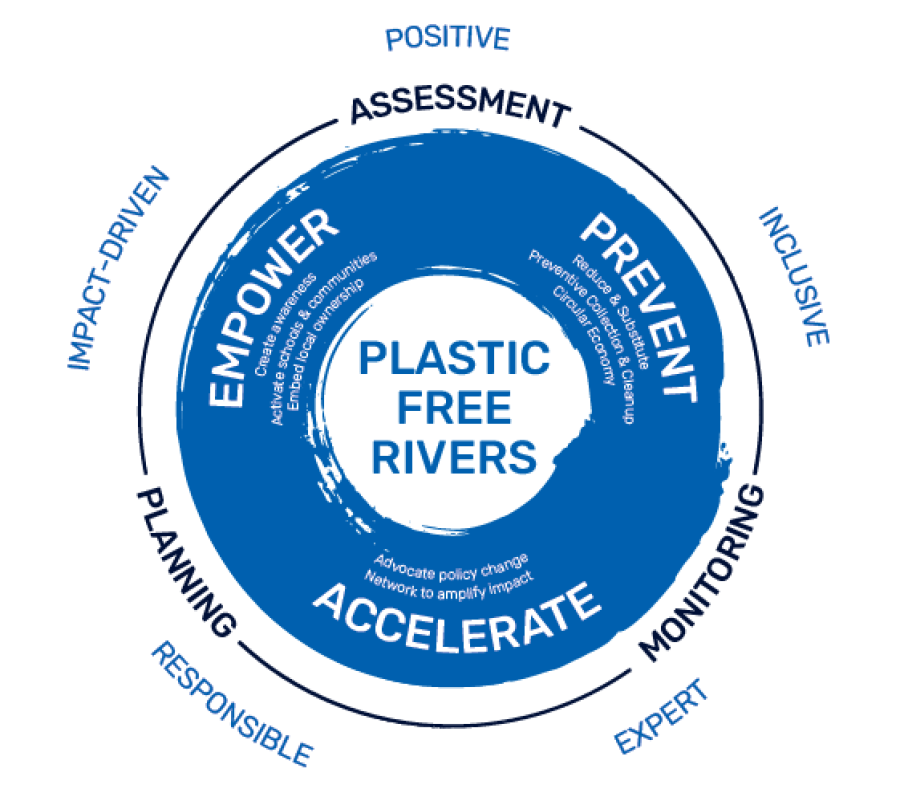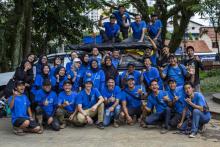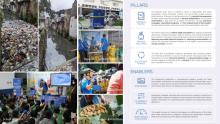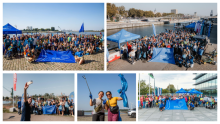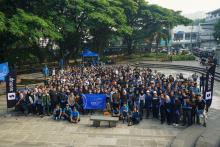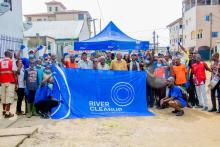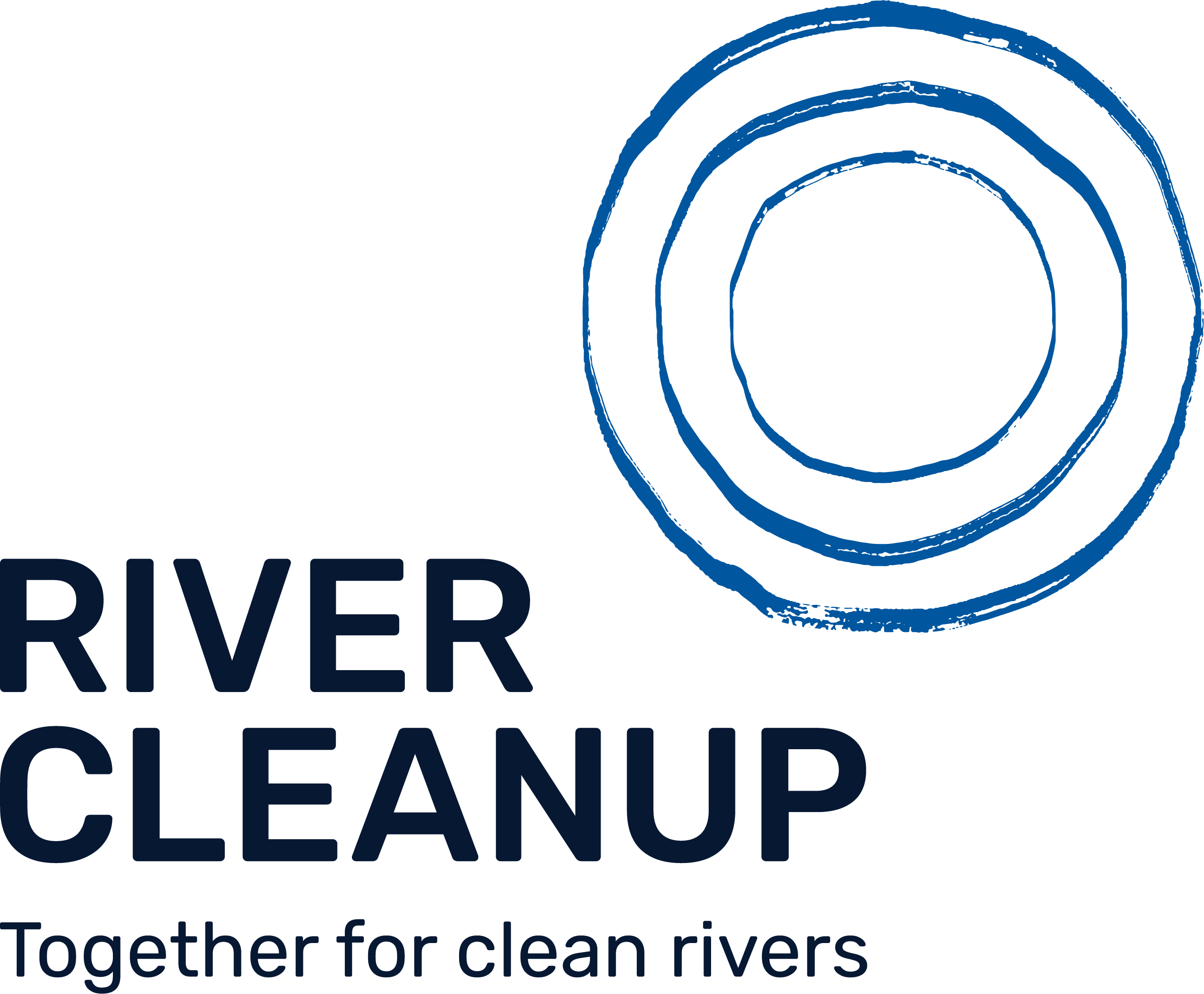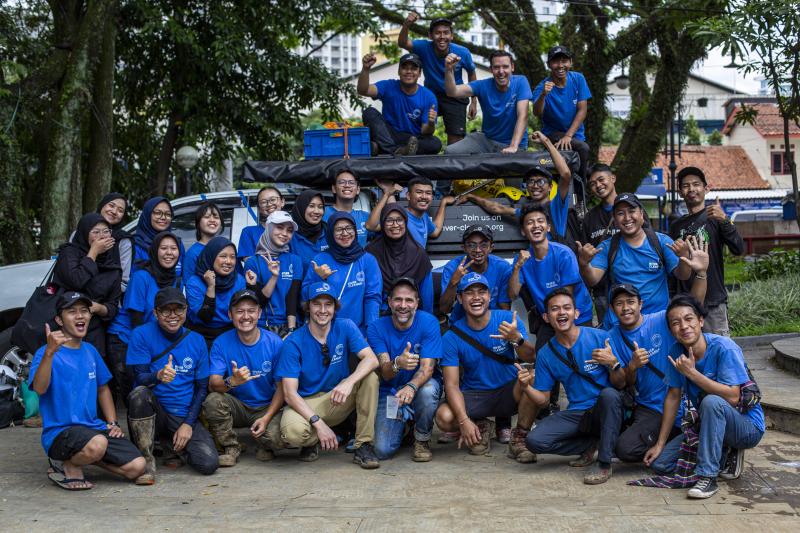The Clean River Model is an open-source theory of change for plastic-free rivers.
The logic is based on a simple and effective strategy: early intervention. Plastics that are not produced never become plastic waste. Collecting post-consumer plastic waste prevents leakage and pollution of the environment. Cleaning up plastic leakage on land prevents plastic pollution of rivers and increases the options to reuse these plastics in closed-loop circular economy solutions. Finally, cleaning up plastic pollution from rivers is the only solution to prevent it from further polluting nature and the ocean.
That’s how we turn off the tap on new plastic pollution and clean up existing plastic pollution most effectively and cost-efficiently.
The logic is based on a simple and effective strategy: early intervention. Plastics that are not produced never become plastic waste. Collecting post-consumer plastic waste prevents leakage and pollution of the environment. Cleaning up plastic leakage on land prevents plastic pollution of rivers and increases the options to reuse these plastics in closed-loop circular economy solutions. Finally, cleaning up plastic pollution from rivers is the only solution to prevent it from further polluting nature and the ocean.
That’s how we turn off the tap on new plastic pollution and clean up existing plastic pollution most effectively and cost-efficiently.
Full description
The Clean River Model, is made up of 3 pillars and 3 enablers. Together, they encompass the entire lifecycle of river plastics.
Pilar 1: Empower people
Local awareness campaigns generate enthusiasm and make people see the problem so they can become part of the solution and change their behavior. Through educational programs, students and teachers are activated to become ambassadors within their families and communities. Local leaders are empowered to take ownership and anchor the change within their communities.
Pillar 2: Prevent pollution
Reduce single-use plastics by promoting sustainable alternatives, implementing plastic reduction projects, and sharing knowledge & best practices. The deployment of accessible collection systems prevents plastic waste from entering nature. Riverine pollution is removed via cleanup actions and technologies. We recycle and repurpose recovered materials at their highest value and promote solutions for a circular economy.
Pillar 3: Accelerate change
We generate data, provide insights, inform authorities on sources of river pollution, propose short-term remediations, promote structural solutions, and advocate policy change to accelerate change. We actively engage and collaborate within a network of like-minded organizations, both nonprofit and for-profit.
Enabler 1: A solid understanding of the problem, including root causes, river parameters, ecosystem services, current interventions, and stakeholder analysis, is key to design and implement a river-specific action plan. This forms the baseline for continuous monitoring and impact evaluation.
Enabler 2: Ensure the successful execution of the Clean River Model by developing a detailed, river-specific action plan and securing the necessary funding. Based on insights from the assessment, the action plan outlines specific interventions and effective project organization to realize the deliverables and mitigate risks.
Enabler 3: We focus on tracking the progress and effectiveness of the Clean River Model interventions by regularly monitoring key performance indicators (KPIs) and evaluating outcomes against established baselines.
Our ambition is to validate the Clean River Model in 2025-2026 along 3 rivers in Belgium, Indonesia and Cameroon. We aim to have the Clean River Model started in 100 rivers by 2030 and implemented in 1 000 rivers by 2050.
Pilar 1: Empower people
Local awareness campaigns generate enthusiasm and make people see the problem so they can become part of the solution and change their behavior. Through educational programs, students and teachers are activated to become ambassadors within their families and communities. Local leaders are empowered to take ownership and anchor the change within their communities.
Pillar 2: Prevent pollution
Reduce single-use plastics by promoting sustainable alternatives, implementing plastic reduction projects, and sharing knowledge & best practices. The deployment of accessible collection systems prevents plastic waste from entering nature. Riverine pollution is removed via cleanup actions and technologies. We recycle and repurpose recovered materials at their highest value and promote solutions for a circular economy.
Pillar 3: Accelerate change
We generate data, provide insights, inform authorities on sources of river pollution, propose short-term remediations, promote structural solutions, and advocate policy change to accelerate change. We actively engage and collaborate within a network of like-minded organizations, both nonprofit and for-profit.
Enabler 1: A solid understanding of the problem, including root causes, river parameters, ecosystem services, current interventions, and stakeholder analysis, is key to design and implement a river-specific action plan. This forms the baseline for continuous monitoring and impact evaluation.
Enabler 2: Ensure the successful execution of the Clean River Model by developing a detailed, river-specific action plan and securing the necessary funding. Based on insights from the assessment, the action plan outlines specific interventions and effective project organization to realize the deliverables and mitigate risks.
Enabler 3: We focus on tracking the progress and effectiveness of the Clean River Model interventions by regularly monitoring key performance indicators (KPIs) and evaluating outcomes against established baselines.
Our ambition is to validate the Clean River Model in 2025-2026 along 3 rivers in Belgium, Indonesia and Cameroon. We aim to have the Clean River Model started in 100 rivers by 2030 and implemented in 1 000 rivers by 2050.
Value proposition
In 2022 we went back to the drawing board with our field experience, the latest scientific insights and one single question in mind: how do we make rivers plastic-free most effectively and cost-efficiently? The answer is our Clean River Model. It’s more than a list of ingredients, it's a recipe for plastic-free rivers.
Here are five reasons why the Clean River Model is unique:
1. Designed for maximum impact & scalability: it's a holistic approach with strategic early interventions in the plastic lifecycle. We prevent new waste and clean up legacy plastic pollution.
2. Built on science, including Breaking the Plastic Wave, in combination with the field experience of removing 3,5 million kg of river (-bound) waste from nature.
3. River-focused: plastics in the environment often end up in rivers. The Clean River Model is fully aimed at preventing plastic from ending up in rivers by reducing plastic use and pollution on land. Cleaning up plastic pollution in rivers is a crucial last step.
4. Practical & concrete: the integrated workflow makes it a hands-on Theory of Change. There is no time to waste.
5. Open-source: by making the Clean River Model and tools publicly available, we aim to empower individuals and organizations globally to have more impact faster.
Here are five reasons why the Clean River Model is unique:
1. Designed for maximum impact & scalability: it's a holistic approach with strategic early interventions in the plastic lifecycle. We prevent new waste and clean up legacy plastic pollution.
2. Built on science, including Breaking the Plastic Wave, in combination with the field experience of removing 3,5 million kg of river (-bound) waste from nature.
3. River-focused: plastics in the environment often end up in rivers. The Clean River Model is fully aimed at preventing plastic from ending up in rivers by reducing plastic use and pollution on land. Cleaning up plastic pollution in rivers is a crucial last step.
4. Practical & concrete: the integrated workflow makes it a hands-on Theory of Change. There is no time to waste.
5. Open-source: by making the Clean River Model and tools publicly available, we aim to empower individuals and organizations globally to have more impact faster.
External links
Payment conditions
We’re inviting visionary philanthropists and impact investors to help scale our Clean River Model: an open-source, systemic solution to make and keep rivers plastic-free. Your support will enable implementation in Belgium, Cameroon, and Indonesia, paving the way to 1,000 rivers restored by 2050. We’d love to explore collaboration.
Product pricing
- Pricing depending on specific customer demands
Brochure or other document
